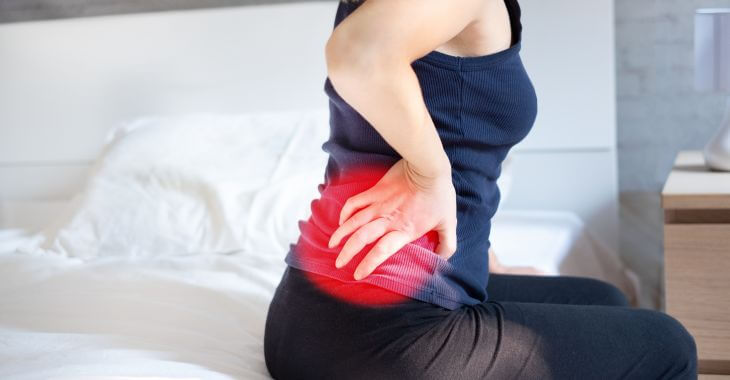Exploring Hip Tendonitis: Symptoms, Causes and Treatment

Hip tendonitis, also known as hip flexor tendonitis, is an inflammatory condition that affects the tendons around the hip joint. This condition is often painful and can significantly limit a person’s mobility. Understanding hip tendonitis symptoms, causes, and treatment options is crucial for hip health.
What is Hip Tendonitis?
Hip tendonitis refers to the inflammation of the tendons in the hip area. Tendons are fibrous connective tissues that attach muscles to bones, facilitating movement. When these tendons become irritated or inflamed, tendonitis results, leading to pain and discomfort in the hip region.
One common form of hip tendonitis is hip flexor tendonitis. The hip flexors are a group of muscles that allow you to lift your knees and bend at the waist. When these muscles are overused or strained, the tendons connecting them to the hip bone can become inflamed, causing hip flexor tendonitis.
Hip Tendonitis Symptoms
Recognizing hip tendonitis symptoms early can help in seeking prompt treatment and preventing further complications. Common symptoms include:
- Pain in the Hip or Groin: A sharp or dull pain in the hip or groin area, especially when moving the leg or lifting the knee.
- Stiffness: Reduced flexibility and stiffness in the hip, making it difficult to perform everyday activities.
- Swelling and Tenderness: Inflammation and tenderness around the affected area.
- Weakness: A feeling of weakness in the hip muscles that makes walking or standing for long periods difficult.
- Clicking Sensation: A clicking or snapping sensation when moving the hip joint.
If you experience any of these hip tendonitis symptoms, it’s essential to consult a healthcare professional for a proper diagnosis and treatment plan.
Causes of Hip Tendonitis
Several factors can contribute to the development of hip tendonitis. Understanding these causes can help in preventing the condition:
- Overuse: Repetitive movements, such as running, cycling, or dancing, can put excessive strain on the hip tendons, leading to inflammation.
- Poor Posture: Incorrect posture while sitting, standing, or exercising can contribute to tendonitis.
- Muscle Imbalance: Weakness or tightness in the hip muscles can place extra stress on the tendons.
- Inadequate Warm-up: Failing to warm up properly before physical activity can increase the risk of tendon injuries.
- Age: As people age, tendons can become less flexible and more prone to inflammation.
Diagnosis of Hip Tendonitis
Diagnosing hip tendonitis typically involves a physical examination by a healthcare provider. During the examination, the doctor may:
- Assess Pain and Movement: Ask about your symptoms and how they affect your daily activities.
- Perform Physical Tests: Conduct specific tests to evaluate the range of motion, strength, and tenderness in the hip.
- Imaging Tests: In some cases, imaging tests such as X-rays, MRI, or ultrasound may be ordered to rule out other conditions and confirm the diagnosis.
Treatment Options for Hip Tendonitis
Treatment for hip tendonitis aims to reduce pain, inflammation and improve mobility. Depending on the severity of the condition, various treatment options may be recommended:
- Rest and Activity Modification: One of the first steps in treating hip tendonitis is to rest the affected area and avoid activities that exacerbate the symptoms. Gradually reintroducing activities as the pain subsides can help prevent further injury.
- Physical Therapy: A physical therapist can design a tailored exercise program to strengthen the hip muscles, improve flexibility, and correct any muscle imbalances. Stretching and strengthening exercises are crucial components of physical therapy for hip tendonitis.
- Medications: Over-the-counter nonsteroidal anti-inflammatory drugs (NSAIDs) such as ibuprofen can help reduce pain and inflammation. In more severe cases, a doctor may prescribe stronger medications.
- Ice and Heat Therapy: Applying ice packs to the affected area can help reduce inflammation and numb the pain. Heat therapy can also be beneficial in relaxing tight muscles and improving blood flow to the area.
- Injections: For persistent or severe pain, corticosteroid injections may be administered to reduce inflammation and provide temporary relief. These injections are typically used when other treatments have not been effective.
- Surgery: In rare cases where conservative treatments fail, surgical intervention may be necessary. Surgery can involve removing damaged tissue or repairing the affected tendons.
Preventing Hip Tendonitis
Preventing hip tendonitis involves adopting healthy habits and practices that reduce the risk of tendon inflammation:
- Warm-up Properly: Always warm up before engaging in physical activity to prepare your muscles and tendons.
- Maintain Good Posture: Ensure proper posture while sitting, standing, and exercising to avoid unnecessary strain on the hip tendons.
- Strengthen and Stretch: Regularly perform exercises that strengthen the hip muscles and improve flexibility.
- Listen to Your Body: Pay attention to any signs of discomfort or pain and avoid pushing through the pain.
By understanding hip tendonitis symptoms, causes, and treatment options, you can take proactive steps to manage and prevent this condition.

If you suspect you have hip tendonitis, it is crucial to seek medical advice and follow a comprehensive treatment plan to achieve a full recovery and maintain a healthy, active lifestyle.
The information provided on this website, including text, graphics, images, and other materials, is intended solely for informational purposes and should not be used as a substitute for professional medical advice, diagnosis, or treatment.


)